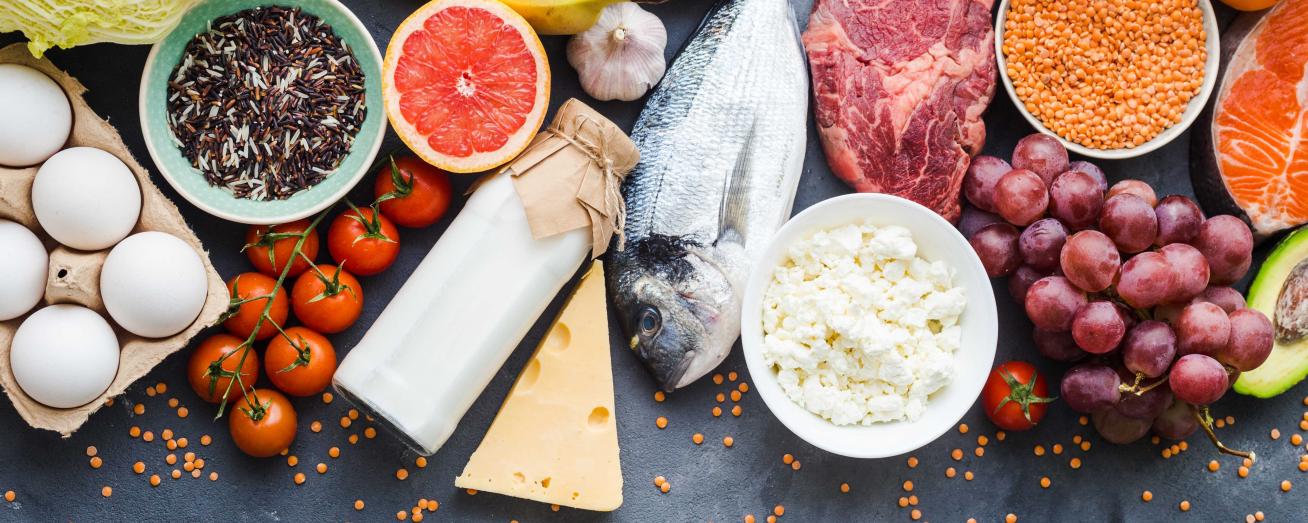A gluten-free diet is the only treatment for coeliac disease. While the diet can be a prescription for health, wheat and gluten are ubiquitous ingredients in our food supply. Maintaining a gluten-free diet can be challenging and requires knowledge of ingredients, food preparation and label reading.
Gluten is a storage protein found in wheat, oats*, rye and barley. Individuals on a gluten-free diet can enjoy a variety of naturally gluten-free foods as well as many manufactured gluten-free products. There are many manufactured gluten-free products specially designed to meet the nutritional needs of the individual as well as provide a safe gluten-free substitute for their usual food preferences. Manufactured gluten-free foods should be labelled as gluten-free or carry a gluten-free symbol or certification. Careful label reading and avoidance of cross contamination is vital. Traces of gluten may be present in various food manufacturing ingredients including food additives, flavourings, fillers, binding agents, and some medications.
Gluten-free diet
| Food Type | Foods allowed | Foods to check | Foods to avoid |
|---|---|---|---|
| Grains | Corn, rice, millet, buckwheat, quinoa, amaranth, tapioca, cassava, Gluten-free oats | Convenience foods (e.g. mashed potatoes, rice mixes), crisps, breakfast cereals | Wheat, barley, rye, spelled, triticale, spelled, kamut, green rye, bulgur, couscous, contaminated oats. Any breads, pasta, batters, cakes, pastries, crackers or biscuits, etc. made from these grains |
| Fruit | All fruits | Dried and candied fruits, smoothies, fruits in sauces | |
| Vegetables | All vegetables | Vegetables in sauces or gravies, dried vegetables, vegetarian convenience foods | Vegetables that have been breaded, coated in flour or batter, vegetables served with added seasonings or sauces |
| Dairy products | Milk (all types), cream, most yogurt, cheese, most ice cream | Flavored milks/shakes, yogurts/ice cream with toppings/added ingredients, processed cheese, cheese spreads, cheese sauces, ready-grated cheese | Malted milk drinks |
| Meat, fish, poultry, and eggs | All types of plain fresh or frozen meat or fish, poultry, eggs, pulses and lentils, peanut butter, plain nuts and seeds, plain tofu | Processed meats (sausages, burgers, luncheon meat, imitation fish products, meat substitutes, dried meat), meat served with sauces/ gravies, baked beans, seasoned or dry roasted nuts and seeds, flavored tofu, tempeh, miso | Meat fish or poultry in batter/bread crumbs |
| Fats, spices, sauces and baking ingredients | Vegetable oils, butter, margarine, lard, vinegar, pure spices, salt, pepper, herbs, all vinegar (including malt vinegar), Worcestershire sauces | Soy sauce, prepared mustards, seasoning mixes, baking sprays, tomato sauce, salad cream and dressings, chutney, gravy granules, curry powder, packet or jarred sauces. | Sauces thickened with wheat flour (e.g roux, Béchamel sauce) |
| Sweets and sweeteners | Honey, sugar (brown, white), agave, confectioners’ sugar, corn syrup, molasses, sugar substitutes, jam, jellies, marmalade | Chocolate and sweets | Licorice, ice cream wafers |
| Beverages | Soft drinks (e.g. cola and lemonade), coffee, tea, pure fruit and vegetable juice and juice drinks, distilled alcohol (bourbon, gin, rum, whisky) liqueurs, port, sherry, wine, gluten free beer/lager, cider | Hot chocolate mixes, cloudy fizzy drinks, coffee whitener | Beer, ale, stout, lager, barley water/squash, malted milk drinks |
